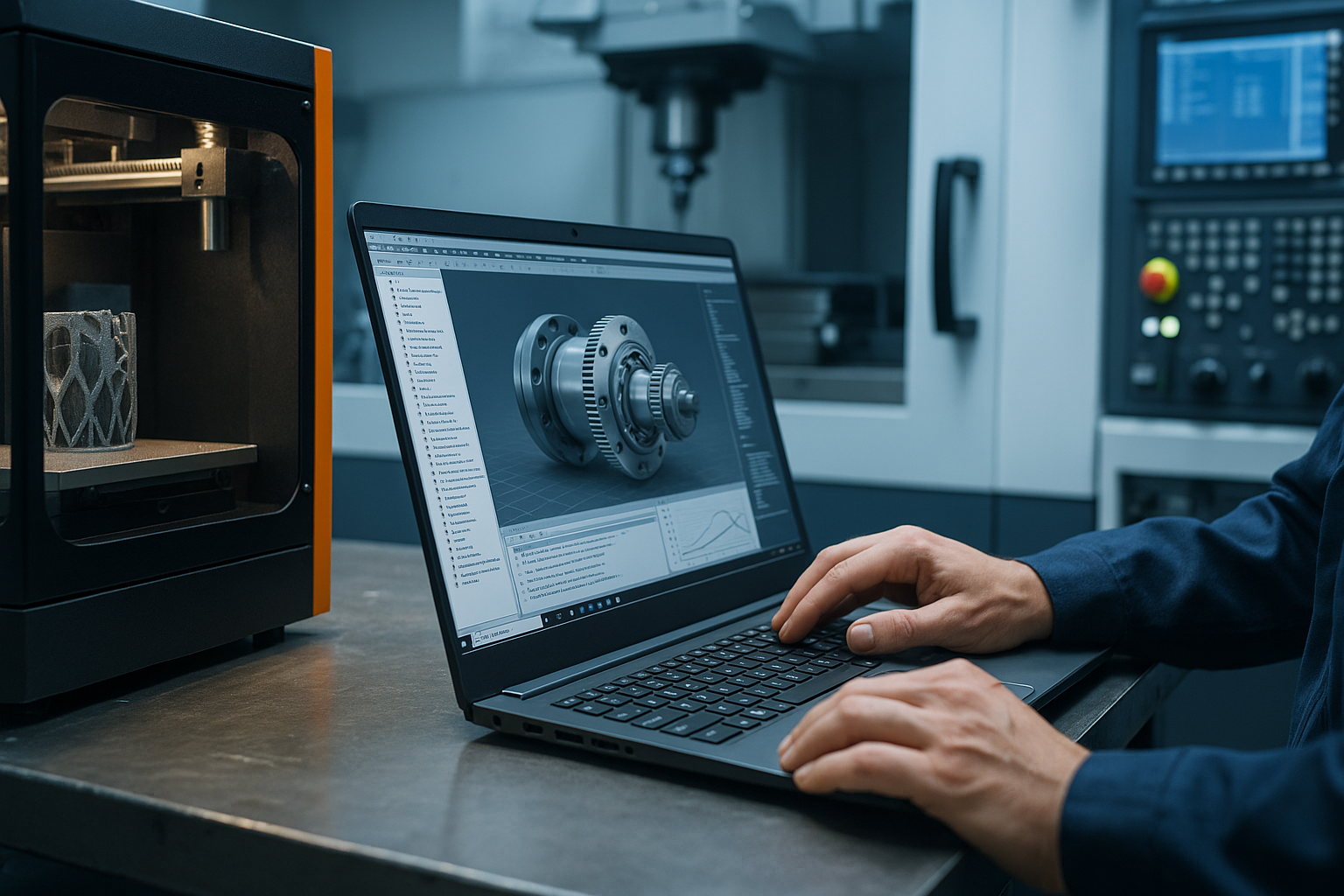How Industry 4.0 tools drive agile, data-driven product design and production
Human-centric innovations, like virtual and augmented reality (VR/AR), IoT-driven adaptive systems, and genetic algorithms (GAs), further strengthen the responsiveness of production lines to real-time conditions. These technologies collectively allow design and manufacturing to move from rigid, linear models to agile and adaptive networks.

A new editorial brings together global research that shows how Industry 4.0 technologies, from advanced computer-aided tools to additive manufacturing and artificial intelligence, are reshaping the future of product design and manufacturing. The editorial appears in the paper "Design and Manufacturing: An Industry 4.0 Perspective," published in Machines.
The study highlights the transformation of traditional design and production processes into agile, data-driven and sustainable systems. It also draws on research papers featured in the special issue to demonstrate how new tools, methods and human-machine collaboration are redefining industrial performance and preparing the ground for Industry 5.0.
How digitalization and smart tools reshape manufacturing
The editorial stresses that the transition from conventional methods to computer-based, data-intensive manufacturing is already well under way. CAD/CAM integration, computational design engineering, and flexible manufacturing systems (FMSs) are helping companies shorten design cycles and optimize operations.
Simulation technologies, particularly Discrete Event Simulation (DES) and digital twins, now enable manufacturers to model complex production lines and test process scenarios virtually before making real-world changes. This approach enhances efficiency and serves as a bridge toward the next wave of Industry 5.0 transformation, where humans and machines work in tighter collaboration.
The editorial notes that additive manufacturing (AM) and 3D printing are no longer confined to prototyping. They are making inroads into sectors such as textiles, furniture, robotics and fashion, supporting faster customization and reducing material waste.
Human-centric innovations, like virtual and augmented reality (VR/AR), IoT-driven adaptive systems, and genetic algorithms (GAs), further strengthen the responsiveness of production lines to real-time conditions. These technologies collectively allow design and manufacturing to move from rigid, linear models to agile and adaptive networks.
Case insights from the special issue highlight technology in action
The paper draws attention to research featured in the Machines special issue, presenting real-world evidence of how digitalization is improving manufacturing performance.
A study by Jerbi et al. used a multi-objective simulation–optimization (MOSO) method for FMS performance, employing goal programming and VIKOR to find optimal solutions under conflicting objectives.
Another contribution by Spahiu et al. demonstrated how 3D-printed geometries can alter the drape of textile fabrics, achieving measurement accuracy within 4 percent, an example of how advanced materials and fabrication methods improve product quality.
Konstantinidis et al. provided a systematic review of how Industry 4.0 technologies leave a digital footprint across manufacturing ecosystems and link to the principles of Industry 5.0, emphasizing the importance of interoperability and data-driven decision-making.
Manavis et al. showed how programming-based applications for furniture design can rapidly generate multiple alternatives, illustrating the potential for computational design tools to boost creativity and reduce time-to-market.
On the shop-floor optimization front, Fountas et al. validated a virus-evolutionary genetic algorithm for fine-tuning laser-based processes such as sintering and melting. Their algorithm outperformed other heuristic methods in precision manufacturing.
For robotics and energy efficiency, Sucuoglu used topology optimization (TO) and finite element analysis (FEA) to develop a lightweight mobile robotic system, achieving a 5.8 percent energy saving, a 56 percent reduction in prototyping time, and a 20 percent increase in mission duration.
Adding to the human-centric perspective, Balasubramani et al. deployed digital twins and physical AI to design an autonomous HVAC control system in a chemical fiber factory, enhancing real-time monitoring and predictive optimization for workplace comfort and energy savings.
Further, Massaro reviewed the potential of Electronic Digital Twins (EDTs) for integrating AI, electronics and mechatronics, offering a pathway for industries seeking to move beyond automation toward Industry 5.0 human-centric production models.
Road ahead: Sustainability, human factors and next-gen technologies
While advanced tools and data-driven methods have boosted efficiency, flexibility and product quality, the next stage of progress will depend on embedding human-centric principles and circular economy (CE) approaches.
For industries to transition smoothly toward Industry 5.0, it is essential to focus on:
- Interoperability and open standards to ensure that digital twins, IoT devices and AI tools communicate seamlessly across systems and enterprises.
- Integration of human factors so that shop-floor workers and designers remain active participants in decision-making, supported by intuitive interfaces and collaborative robotics.
- Application of AI-driven optimization in areas such as additive manufacturing and process control to improve resource efficiency and reduce waste.
- Adoption of sustainable materials and circular models to extend product lifecycles and minimize environmental impacts.
- Development of explainable, adaptive systems that build trust among operators, managers and end-users while meeting evolving regulatory and safety standards.
Looking forward, the authors underline that the real measure of success will be industries' ability to align technological innovation with sustainability, resilience and human-centric design. This integration will pave the way for the Industry 5.0 era, where machines complement rather than replace human creativity, and where manufacturing contributes not just to economic output but also to environmental stewardship and societal well-being.
- FIRST PUBLISHED IN:
- Devdiscourse









